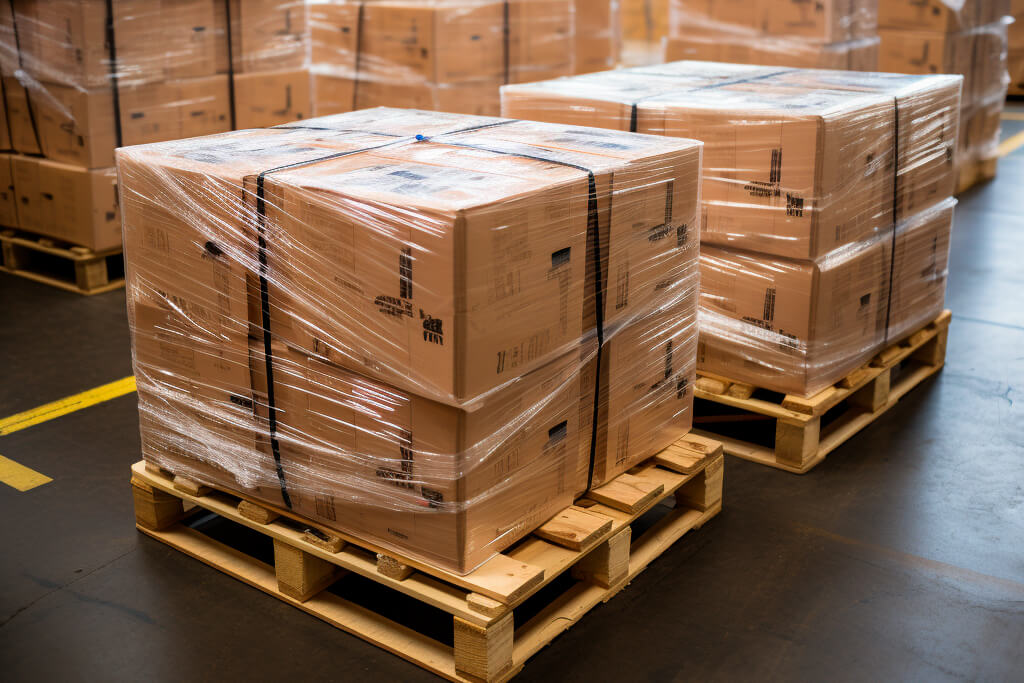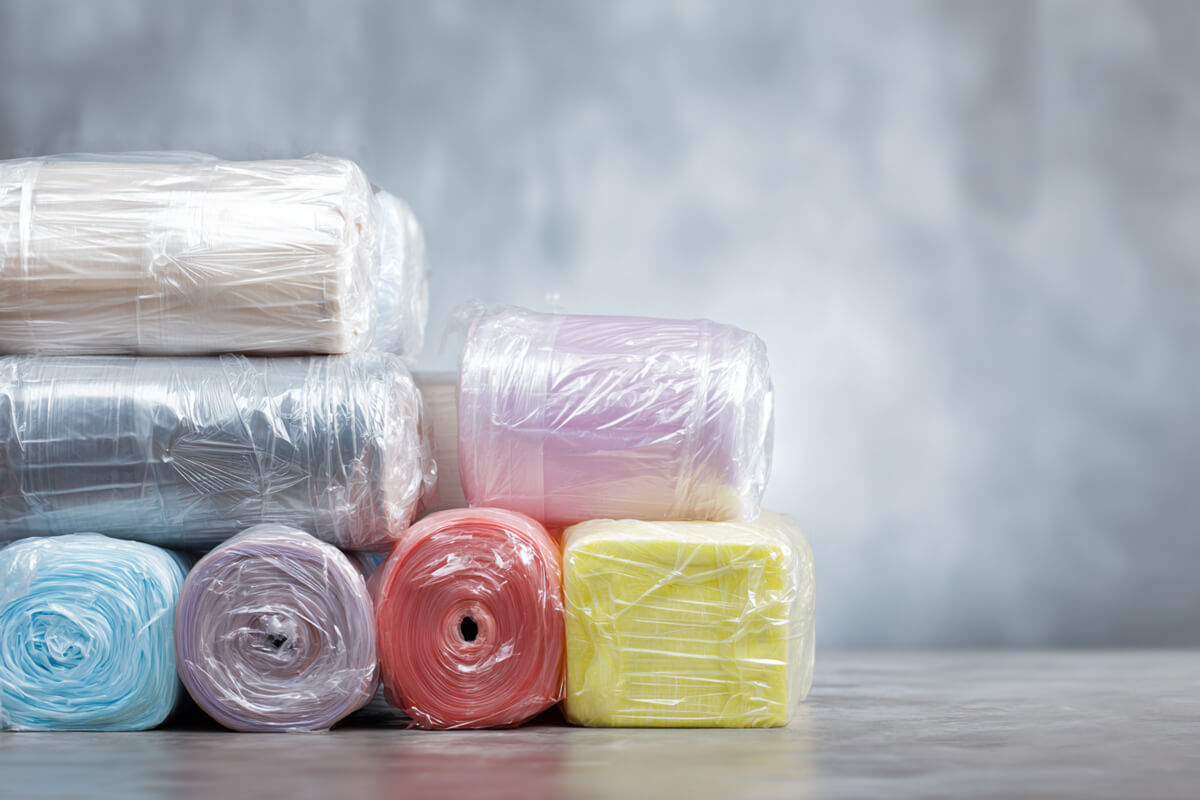How To Stretch Wrap A Pallet In The Most Efficient Way
Pallet stretch wrapping is one of the most common techniques used to secure the cargo and prevent it from being damaged. However, there is one popular misconception that it is pretty easy to do, while the reality is a little different. In this article, we will explain everything you need to know about how to stretch wrap a pallet and what is the most efficient way to do it.
What tools you should prepare before starting
You need to do a quick preparation before starting wrapping your pallet. Here’s a breakdown of what you’ll need:
Stretch Film: The main component that will secure your pallet. Keep in mind that it comes in various thicknesses, so choose the one that suits the weight and size of your cargo. If you are not sure, what to choose, then we will be more than happy to help you with it.
Stretch Wrap Dispenser: Stretch wrapping a pallet is okay to do with your hands, but a stretch wrap dispenser is a great tool to have as it makes the job much easier and more consistent.
Safety Gear: Wrapping pallets is not the most dangerous thing to do, but it is still important not to neglect safety precautions. You will need only a pair of gloves, that can protect your hands from friction, and safety goggles, which will be a great shield for your eyes from any debris that might pop up during the process.
That’s it! Just three main items, and you’re well-equipped to tackle pallet stretch wrapping. The tools might be simple, but they’re essential for getting the job done efficiently and effectively.
Step-by-Step Guide: How to Wrap a Pallet
Now let’s get to the most interesting part — the step-by-step process of wrapping a pallet.
1. Prepare the Pallet Load
Before you even reach for the stretch film, make sure your pallet load is properly arranged and secure. Items should be neatly stacked and evenly distributed for balanced weight distribution.
2. Anchor the Stretch Film
Start by anchoring the end of the stretch film to the pallet. A simple knot or wrap around one of the bottom corners will do the trick.
3. Begin at the Bottom
Initiate the wrapping process by securing the film around the base of the pallet. This is needed to provide a solid foundation for the rest of the layers.
4. Create a Base Layer
Wrap the film around the pallet in a circular motion (no random moves), making sure to slightly overlap each round. This initial layer helps stabilize the load.
5. Build Multiple Layers
Gradually work your way up, adding more layers while maintaining consistent tension. Each layer reinforces the stability of the load.
6. Maintain Tension
As you wrap, apply gentle tension to the film. It should be taut enough to hold everything together, but not so tight that it damages the items.
7. Seal the Film
Once you’ve wrapped the pallet, tuck the end of the film under a previous layer to secure it. Alternatively, you can use adhesive tape to seal it in place.
These are the main 7 steps that you will need to make to wrap the pallet. Since you know the basics, let’s take a look at some techniques.
Stretch wrapping mistakes you need to avoid
While pallet stretch wrapping is relatively straightforward, there are a few mistakes that you might make during the process. Here are some common mistakes to watch out for:
1. Insufficient Overlapping:
One of the key mistakes is not overlapping the stretch film enough between layers. Insufficient overlap can weaken the integrity of the wrap and lead to unstable loads.
2. Inconsistent Tension:
Maintaining consistent tension throughout the wrapping process is vital. If the tension varies too much, some parts of the load might be overly compressed while others remain loose.
3. Neglecting the Bottom Layer:
Focusing solely on the upper layers of the pallet can lead to a weak foundation. Always ensure that the bottom layers are wrapped securely to provide a stable base.
4. Skimping on Wraps:
Sometimes, to save time or resources, people use fewer wraps of film than necessary. This can compromise the stability of the load and increase the risk of shifting.
6. Ignoring Load Distribution:
Properly arranging the items on the pallet is crucial. Neglecting load distribution can lead to imbalanced weight, making the load prone to tipping or shifting.
FAQs
How do I calculate the right amount of stretch film to use?
Calculating the right amount of stretch film depends on the dimensions of your pallet and the type of load. You will need to measure the height, width, and length of the pallet and use these measurements to estimate the required amount of film. There is also a simple formula you can use to calculate the amount of stretch film needed for wrapping a pallet:
Stretch Film Length (in centimeters) = (Height + Width) x 2 + Length x Number of Layers
Height: Measure the height of the pallet load.
Width: Measure the width of the pallet.
Length: Measure the length of the pallet.What’s the difference between hand stretch wrapping and machine stretch wrapping?
Hand stretch wrapping involves manually wrapping the pallet using a dispenser or by hand. Machine stretch wrapping, on the other hand, utilizes automated machinery to wrap the pallet. While both methods achieve the same goal, machine wrapping is more efficient for large-scale operations.
Can I reuse stretch wrap?
Yes, you can reuse stretch wrap in some cases, but it’s important to assess its condition. If the film is torn, stretched out, or compromised in any way, it’s best to use fresh stretch wrap to ensure the stability of your pallet load.
Conclusion
We hope that this article has provided you with valuable steps to stretch wrap a pallet by preparing the necessary items, following the step-by-step guide, and avoiding common problems. If you have any questions regarding hand pallet wrap or machine stretch film, then we will be more than happy to provide you with a free consultation or sample of one of our products.






